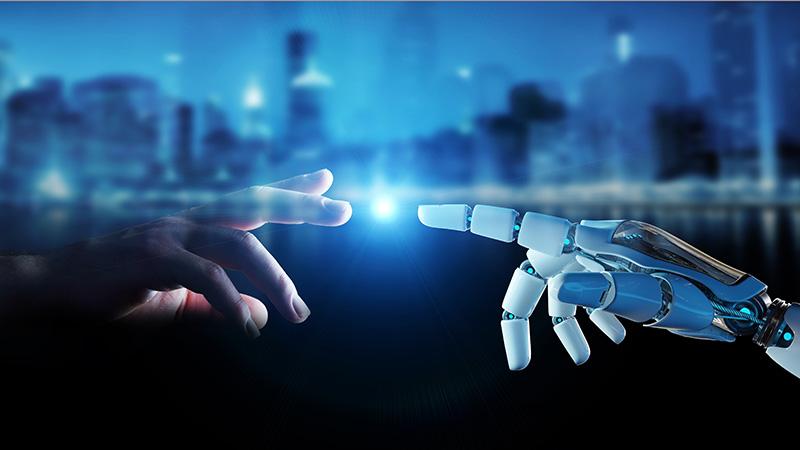Better insights from better data - the power of machine learning and AI
The term “machine learning” was coined by Arthur Samuel as long ago as 1959, with research into the topic – closely linked to research into artificial intelligence (AI) – continuing through the decades that followed. But at this point it was ahead of its time – computing power wasn’t yet sufficient to yield the opportunities promised. It is only now that we can start to see the fruits of these early labors, with far greater computing power, increasing amounts of digitized information, and the ability to easily share data via the internet.
A cloud-based revolution
The next industrial revolution has already begun – there have been major changes and developments with cloud platforms in the last five years, with industries benefiting massively from the availability of increasingly standardized commercial offerings. This has brought opportunities for a large amount of data to be processed and analyzed, as well as making data easier to access. Connected Internet-of-Things (IoT) devices and cloud availability are providing the platform for what will come next – and undoubtedly it will involve AI and machine learning.
For the last few years there have been efforts in many industries to collect data without really fully knowing how to use it. Machine learning and AI are the missing piece of the puzzle – a solution that has been waiting decades for its problem. In 2020 we finally have the computing power to make use of machine learning, with the ecosystem and environment ready and waiting. We can take the data from all these connected devices in the cloud and find new opportunities with AI. No one knows exactly what will happen, but I’m sure there will be value to be realized and valuable new insights to uncover.
Keeping data secure
When talking about risks associated with AI and the cloud, people immediately think of cyber security. Obviously cyber security is of the utmost importance in modern society, but the level of risk assumed is sometimes overstated. The cloud is not inherently insecure – it can in fact be in some ways more secure than having data on your personal computer, or on a server in your basement. Commercial cloud providers have hundreds if not thousands of people working on security; it would be hard for any company to put the same amount of effort into security in a non-cloud environment. We are seeing a turning point in industry where we all realize security is essential, but there is a growing understanding that the cloud might actually be the safest place for our data.
The big risk of bad data
But there is another, less obvious, risk than a cyber-attack. AI might be able to crunch a lot of data and learn a lot of things, but the learning – and consequently the decisions based on it – are only as good as the data you put in. In a nutshell, bad data in means bad decisions out. It’s important to get the facts and the base data right – even all the computing power and data points in the world can’t rescue you from bad data. For measurement applications, it’s essential that the original sensing information is accurate in the feed data; in other applications there are also ethical considerations to be made: data must be accurate but also fair and unbiased. For example, if an AI recruiting system learned what constitutes a good candidate based on a certain dataset of previous hires, no woman would ever be given a job!
The robots are not coming for our jobs
While it’s hard to foresee all the impacts of machine learning on the different jobs people do, it’s unlikely that large segments of the workforce will be replaced by machines. If we take industrial process measurements for example, we’ve already discussed how essential it is that measurement data is correct, so we’ll still need competent people choosing what parameters to measure, what equipment to use, how to install it to ensure accurate measurements, how to take representative samples, and much more. Without this, AI and machine learning will fail and we will waste the opportunities they present. Man and machine will need to work together in the future, just as we do today.
Working to provide good data
Vaisala always wants to bring value to customers in the field of industrial measurements by offering the best products on the market. To do this we are constantly innovating and looking for new opportunities. The value of good measurement – measurements that are stable, reliable, and accurate – is becoming more and more important; whether you’re looking to optimize industrial processes, achieve high-quality output, develop a circular economy, or optimize energy usage, you need high-quality measurements. We are also looking at how we can add more value to our products, for example in how our customers can access past and present measurement data or receive alarms and notifications. The industry’s shift towards cloud-based systems is something that every company who wants to be providing added value should be looking into. We want to expand the business of measurement to add new levels of convenience and value, because the importance of accurate, reliable measurement data is only going to grow.
View also our previous posts around this topic: Developing future-proof solutions by Mika Väisänen, our Senior System Architect and also take a look at some of the tangible advantages of cloud-based sensing solutions that our Senior Product Manager Lars Stormbom has presented in his post Reaching for the clouds.


Comment
Add new comment